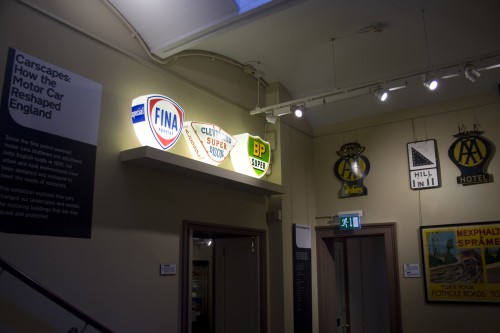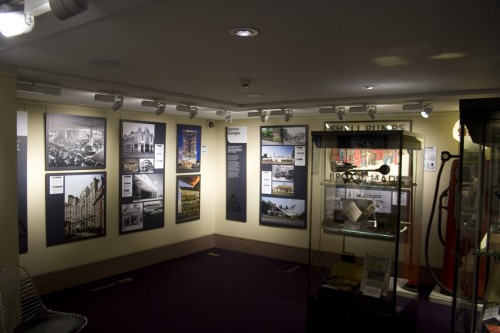A new exhibition has opened inside the Wellington Arch at Hyde Park that looks at how the architecture associated with the motor car changed the landscape.
From the arrival of motorways, to multi-story car parks and even the petrol stations, they have all had a defining impact on the landscape we see around use.
The exhibition is both an informative collection of photos and display cards, as well as maybe a nostalgic look back at a time when the motor car was still a bit of a luxury and motorways were still waiting for their first traffic jam.
One thing I wasn’t aware of though was just how early the multi-story car park had arrived — as early as 1902 for the first one. The explanation for their early arrival was however strikingly obvious when explained.
In an age when the motor car was still more of an open carriage on wheels, parking the car outside was not desirable in the English weather — hence car parks!
However, while town centres built car parks, homes were often to follow much later, with garages added where possible, but in the early days, a car could well be stored at the local garage and brought to the home when needed.
Of course, as the motor car gained ascendancy, its effect was felt.
From vast motorways snaking through the countryside, to grand post-war schemes running right up to the 1970s to have motorways run right into the centre of cities, or at least encircle them in a deathly ring road.
The ring roads and town centre car parks bring prosperity from the edges to the town centre, but in doing so also bring pollution and residential blight to those forced to live too close to the concrete constructions.
I know we are supposed to deride Milton Keynes for its US-style regimented road layout and superiority of the motor car, but actually, they probably got it right, as the roads are surrounded by raised mounds of earth and planted with vast numbers of trees. It’s actually quite pleasant — if you can drive a car that is.
Concrete is of course the dominant feature of the architecture of the motor car, primarily as most of the construction of associated services, such as the car parks, the service stations and their like took place while concrete was still as popular as the car it supported.
Interestingly a couple of drawings of what early car enthusiasts thought a motorway of the future would look like involved brick, and looked more like giant railway arches than the sleek concrete structures we see today.
And while often stained and neglected, motorway flyovers do have a certain sort of brutal charm about them. I’ve long enjoyed walking around the Hammersmith area with its dual appeal of massive construction and urban decay mixing together so effortlessly.
And a good scrub at home to wash off the pollution!
If you want a good overview of how the architecture associated with the motor car changed the English landscape, then this is as good a way to start. Do take a notepad, if you are like me, there are a lot of snippets there for later research or visits.
The exhibition is open until the 6th July and entry is £4, which includes the rest of the Wellington Arch — the roof balconies and the museum in the middle floors.
What you won’t be able to see is the huge ventilation shaft — for the Wellington Arch is itself in part, a result of the architecture of the motor car.











This has reminded me that there is a grade II listed 1929 built multi story car park here: http://goo.gl/maps/vynaO
thanks Kit Green, been a Londoner all my life and still learning new things about the city.
I only recently discovered this Art Deco beauty hidden near Russell Square http://en.wikipedia.org/wiki/File:ExDaimlerHireGarageBloomsbury.jpg
It’s the Grade II listed former garage of ‘Daimler Hire Ltd’, suppliers of chauffeur-driven Daimlers. Apparently they provided 150 cars for the use of foreign dignitaries at the 1937 coronation.